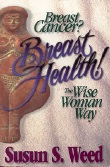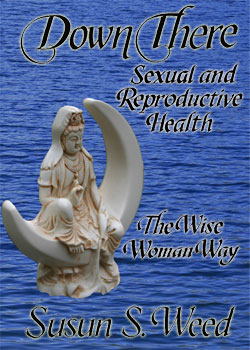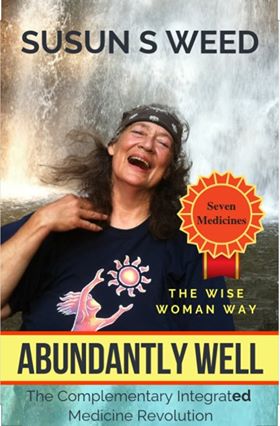"Oh, how densely packed your head is, my sweet," sighs Grandmother Growth. "I'm afraid there's no room for new growth. If you could empty your mind, leave off worrying and planning for a while, and give in to the chaos and its random pleasures, just for a short time, I think you'd feel less pressure and your head would hurt less. The energy of your womb now circulates inside you and throbs in your head. Sit quietly; breathe out through the top of your head and imagine the breath falling gently down to earth. Rest your forehead against the earth. Place this cool stone on your third eye. Your Crone's Crowning comes closer. This is the work of your body; let your mind rest."
Step 0: Do Nothing
• Follow your natural instinct: lie in total silence, in complete darkness, and sleep, if possible, until the headache is gone.
• Like fatigue, a headache, especially a migraine, is a way to get some time alone. Is finding time for yourself usually a headache?
Step 1: Collect Information
• Menopause often brings relief to the woman who has had migraine headaches since adolescence. Other women experience headaches for the first time during menopause, usually the result of fatigue, stress, rapidly changing hormone levels racing through the liver, and rushes of kundalini moving into the crown area.
• Menopausal headaches may also be triggered by sudden (and usually short-lived) allergies to certain foods.
• Headaches and migraines are a common side effect of ERT/HRT.
Step 2. Engage the energy
• Rub a drop of lavender or chamomile oil briskly between your hands. When palms are warm and tingly, place them on the part of your head that aches. (It's also wonderful to have someone do this for you.)
• If it's tolerable for someone to hold your head, try this: Sit in a chair or lie down. Lean your head back into your friend's hands and allow them to support your head in their palms (fingers pointing down, thumbs above the ears) for up to five minutes. Breathe fully.
• Blinking red lights can relieve extreme or severe migraines, within an hour, 72 percent of the time. Wear goggles that restrict side vision for maximum effect.
• Women with chronic migraines often benefit greatly from the help of a skilled feminist therapist.
Step 3. Nourish and tonify
• Tea, infusion, or tincture of garden sage leaves offers immediate relief from a headache and helps prevent future ones.
• Black cohosh root tincture or a vinegar of fresh willow leaves will ease a headache with pain- killing methyl salicylate. Ten drops of the tincture or one teaspoon/15 ml of the vinegar is equivalent to two aspirin.
• Vervain (Verbena officinalis) was a sacred herb in the ancient matriar-
chies. Menopausal women use the tincture of fresh vervain flowers, 20-40 drops in water, before bed and as needed, to strengthen the nerves, relieve insomnia, dispel depression, treat nervous exhaustion, and
moderate headaches, including migraines. (Vervain was a favored plant for the Maiden's altar and the moon lodge, where she was used to promote the onset of the menstrual flow, ease cramps, reduce flooding, and quicken desire.)
• Lady's mantle, another ancient sacred plant, has many magical attri-butes, including an ability to aid women who are taking on or leaving
the role of mother. What a wonderful friend for an emerging crone! Try 10-25 drops of the tincture of the fresh herb several times a day to relieve headaches.
• The beautiful spring primrose (Primula veris) offers relief from meno-pausal headaches if taken regularly. The golden carpet of Schlesselblume on Bavarian pastures and roadsides is one of my favorite memories of Germany. If you don't visit or live in Bavaria, you can grow and gather the blossoms of Primula officinalis instead; they're also a good source of pain-killing salicyn. Make a tea of the dried flowers and drink several cups a day for some months.
CAUTION: Sip your first cup mindfully and slowly, as some folks are allergic to primrose.
NOTE: The roots of most primroses contain oil-soluble estrogenic factors and cell-softening saponins, suggesting use as an ointment for tender, dry vaginal tissue.
• Connections between foods and headaches are sketchy. There is little evidence that plants indigenous to the Americas, such as chocolate and nightshades (tomatoes, potatoes, eggplant, peppers, tobacco) contribute to headaches. I do suspect that chemicals in processed foods (such as aspartame, MSG, and nitrates) and in some natural ones (aged cheeses, miso, red wine) can trigger headaches. With other foods, you're the best judge.
Step 4. Stimulate/Sedate
• Avoid alcohol. It is a known headache trigger.
• Keep cool. Being hot, from hot baths, saunas, hot flashes, exertion, or air temperature, is the second most common headache trigger. Stay cool. Stay in the shade. And just say "no" to hot tubs.
• Sedate headache pain with tinctures of skullcap, 3-5 drops, and
St. Joan's wort, 25-30 drops. I take them together, as frequently as needed, up to half a dozen times a day. Migraine sufferers take them as soon as the aura begins, before there is pain, and repeat every ten minutes for 3-6 doses.
• Anti-inflammatory, hormone-rich wild yam eases the aching heads of menopausal women. A dose of wild yam root tincture is 10-30 drops up to 6 times a day, or infused, 1-2 teacupsful a day. The lower dose, taken daily, relieves chronic headaches. In acute situations, use the higher dose.
• Soak your feet in cool water scented with a few drops of rosemary oil. Breathe deeply.
• Migraines are most frequent between 6 a.m. and noon. Take head-ache remedies before bed and on awakening to insure maximum effect.
• To banish simple headaches, soak a handful of fresh lemon balm (Melissa) leaves in a glass of wine for an hour, or drink a tea of dried leaves. If you want sleep as part of your headache cure, substitute catnip (Nepeta cataria) for the melissa.
• Feverfew (Chrysanthemum parthenium) is a much publicized remedy for migraine. It is most effective as a preventative measure: eat a sprig of the fresh plant daily. For acute headache, 2-4 fresh leaves or a cup of strong tea may help. CAUTION: May irritate mouth.
Step 5b. Use drugs
• Painkillers are many women's first thought for a headache remedy. But habitual use increases the duration and frequency of headaches.
• Taking ERT/HRT? Ease off and see if your headaches ease up.
Step 6. Break and enter
• Some women say their headaches are so bad that they want to blow their brains out. Perhaps menopausal headaches, like sleeplessness, are part of the physical "mind-altering" process of becoming a crone.
Excerpt from New Menopausal Years the Wise Woman Way
by Susun S. Weed
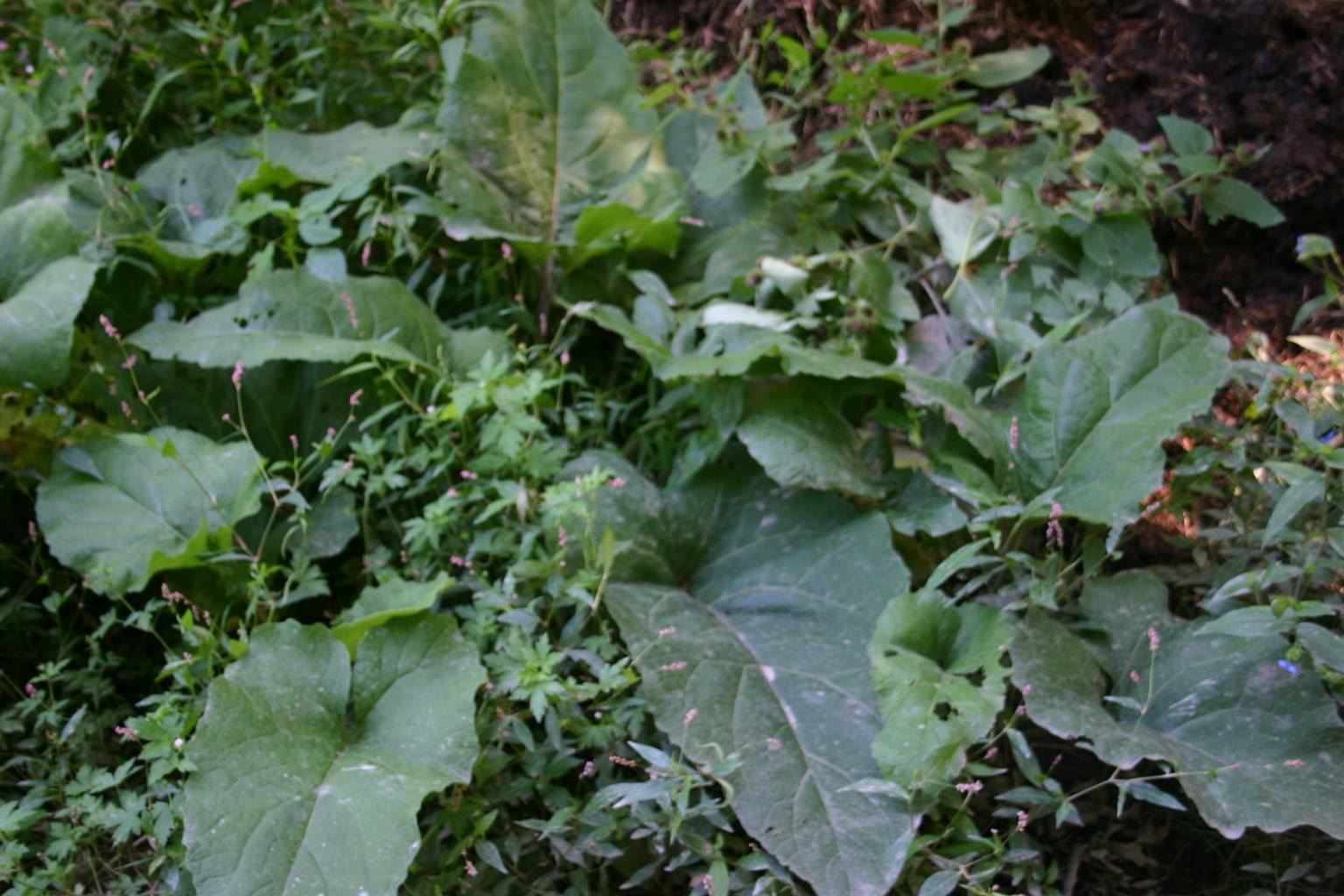
With so many abilities to offer, it is no wonder that burdock (Articum lappa) is a beloved ally of wise women and herbalists everywhere. Burdock's action is most profound on lymph, sweat, and oil glands, though its influence is felt in the liver, lungs, kidneys, stomach, uterus, and joints.
Medicines made from the fresh burdock root are always preferable and superior to dried root preparations. Burdock is not for people in a hurry, or most acute problems; burdock works thoroughly and slowly.
Use burdock root as a nourishing tonic, a skin clearer, a super cooler, a slick trick in the guts, and a guardian of your inner flows.
• Dose of fresh burdock root tincture is 30-240 drops a day, in water
• Dose of dried burdock root infusion is 1/2-2 cups/125ml-500ml a day.
• Dose of burdock root decoction is 1-9 teaspoons/5-45ml a day.
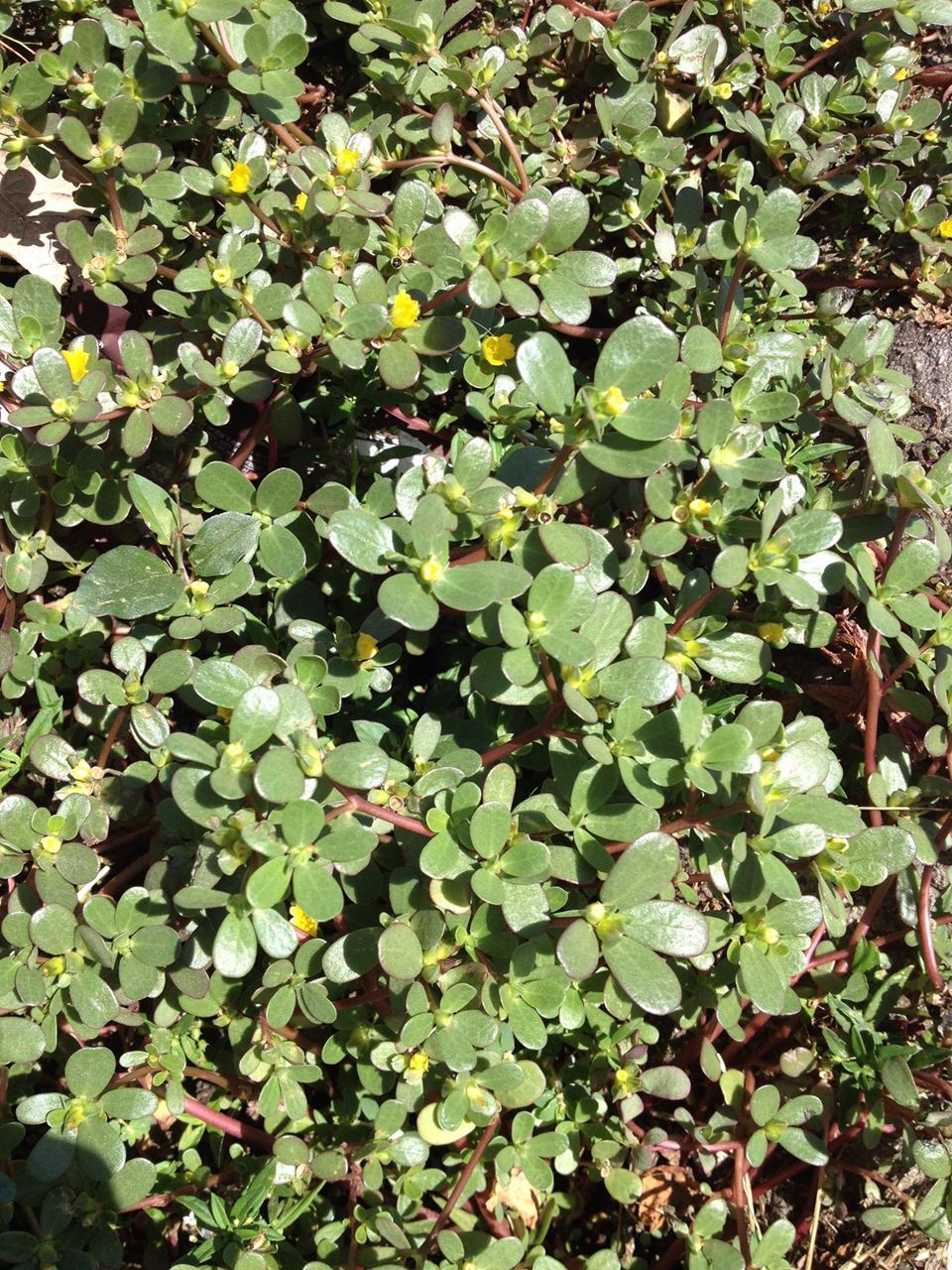
Herbs are powerhouses of nutrition. Used wisely and regularly, herbs can replace costly pills and supplements, and even some drugs. For example, if you currently take fish oil capsules, omega-3 oil capsules, flax oil, or anti-depressants, a switch to purslane could improve your health and save you lots of money, too.
Purslane (Portulaca oleracea) is a common weed in cultivated soils throughout the United States. You won't find purslane in the supermarket or health food store (yet); you'll have to discover it in the wild, which is very easy to do if you look during the summer. In the country, look in gardens. In the city, look in flower beds and planters.
With its thick red recumbent (laying on the ground) stalks and its small fleshy green leaves, purslane looks like a tender succulent, not a hardy annual whose seeds find it easy to survive long cold winters. When you find purslane, harvest it by cutting the tender tips -- as little as one inch or as much as eight inches, depending on the size of the plant.
Eat fresh purslane alone dressed with olive oil and vinegar or lightly sauteed in butter, or add it to salads and soups. Try Purslane Pickles. Or cool off with Purslane Gazpacho.
Herbalist James Duke says purslane contains up to 4000 ppm of the omega-3 fatty-acid alpha linolenic acid (ALA); that means a 100 gram serving (between 3 and 4 ounces) contains 400 mg of ALA. Purslane-fed chickens lay eggs that have twenty times more omega-3's than regular eggs. Eating purslane is tastier, safer, and more effective than taking omega-3 supplements. To increase the effect, Duke suggests adding walnut oil to your purslane.
Purslane counters depression. It is one of the five herbs -- lettuce, amaranth greens, lamb's quarters greens, and watercress are the other four -- richest in antidepressant substances. Purslane is a superior source of calcium, magnesium, potassium, phenylalanine, and tryptophan, all of which are known to moderate the effects of depressive brain chemicals.
Purslane is loaded with nutrients. A single one-cup serving contains all the vitamin E you need in a day, as well as significant amounts of vitamin C and pro-vitamin A. Purslane is one of the very best sources of magnesium. One cup supplies your minimum daily need of 450 mg. Lack of magnesium is associated with diabetes, migraines, osteoporosis, hypertension, and asthma.
And, that one cup of fresh purslane gives you over 2000 mg of calcium and 8000 mg of potassium. Women who take calcium supplements do nothing to strengthen their bones. Women who eat foods rich in calcium -- such as yogurt, stinging nettles, and purslane -- have flexible bones which resist breaking.
Purslane seeds have been found in caves in Greece that were inhabited 16,000 years ago.
Does purslane have a place in your life? Remember that herbs are not drugs and they don't work in drug-like ways. Herbs nourish, strengthen, and tonify. Their effects are deep-rooted and may be slow to become visible. Because purslane is a food, it is generally considered safe to use it even if you are taking multiple drugs. As the effects of the purslane become apparent, and if your medical advisor agrees, you may wish to slowly lessen the amount and number of drugs and supplements you take.






